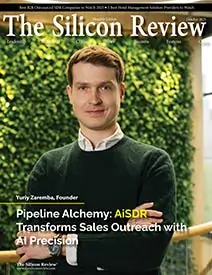>>
Industry>>
Nanotechnology>>
University of Manchester Advan...University of Manchester Advances Spintronics with Graphene Breakthrough
The Silicon Review
26 Febuary, 2025
Scientists at the University of Manchester achieve a breakthrough in spintronics and quantum transport with graphene.
Scientists at the National Graphene Institute (NGI) at the University of Manchester have made a historic breakthrough in nanotechnology in their recent paper on spin injection into graphene. The research, in Communications Materials, explores key innovations in spintronics and quantum transport and is a quantum leap forward in quantum electronics.
Spintronics is an emerging electronics paradigm that takes advantage of electrons' spin, rather than charge, to save and transfer data and offers future computing energy-efficient and high-speed solutions. The Manchester researchers, directed by Dr. Ivan Vera-Marun, have been able to encapsulate monolayer graphene in hexagonal boron nitride, a two-dimensional (2D) insulator, to maintain the quality of the graphene. By designing the 2D stack such that it reveals the edges of the graphene only and putting magnetic nanowire electrodes above the architecture, they designed one-dimensional (1D) contacts which allowed for quantum transport.
Their findings indicate that the electron transport between the contacts becomes quantum-like under low temperature conditions (20 K), where quantized conductance is made possible through the quantum point contacts (QPCs). This finding shows the promise of spin transport in graphene and pushes the frontiers of quantum nanotechnology. First author of the study, Dr. Daniel Burrow, pointed out how the manipulation of electron density and use of magnetic fields allowed energy subbands to be visualized, further associating quantum spin injection with the transport process.
The paper outlines a technologically viable and effective approach towards fabricating tuneable QPCs in graphene, overcoming past difficulties encountered in earlier spintronics techniques. The research unlocks potential for efficient devices in nanotechnology and energy-saving spintronics. This work is in line with Horizon Europe, concerning 2D heterostructure spin memory technology, funded through UKRI funds. The NGI remains ahead of the world in graphene as well as in 2D material research, pushing innovative breakthroughs in the field of nanotechnology.


_2025-11-17_06-38-14.webp)

 (1)_2025-10-21_13-35-14.webp)

_2025-10-02_10-21-48.webp)